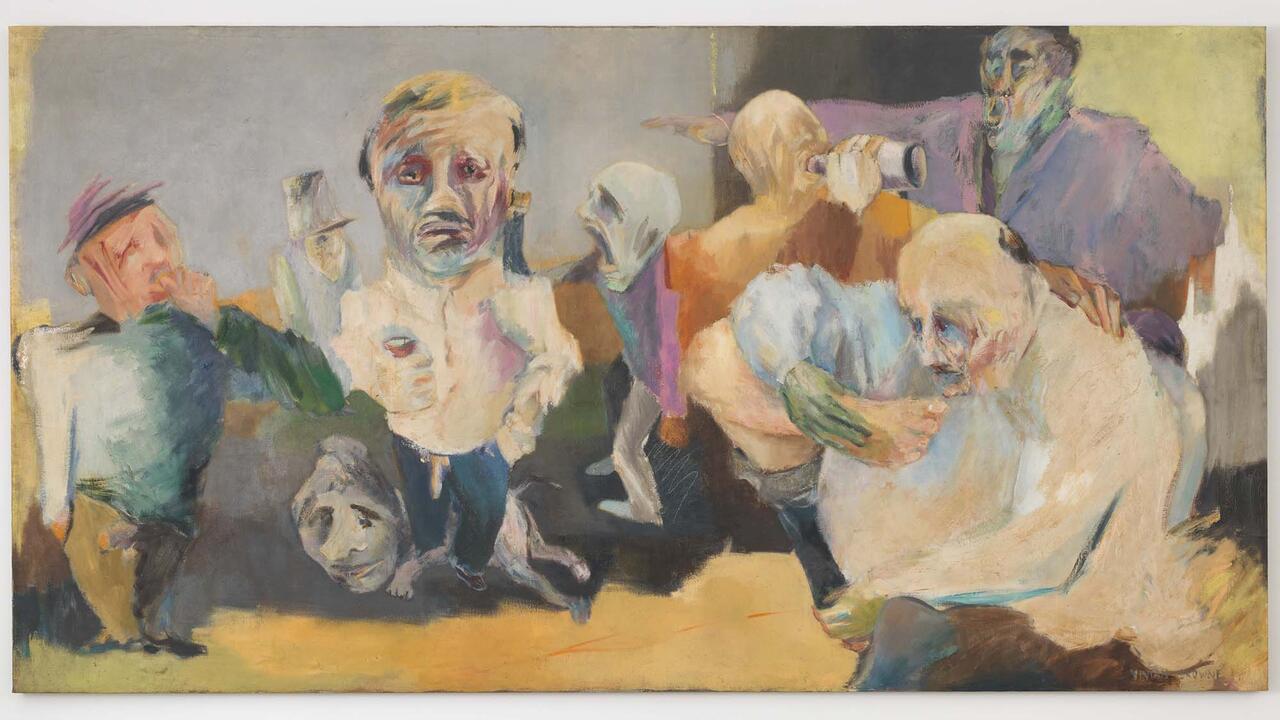Currents: Carpets
Surveying recent exhibitions, Kito Nedo considers the history of the carpet as an artistic medium
Surveying recent exhibitions, Kito Nedo considers the history of the carpet as an artistic medium

For carpet lovers, Anna Betbeze’s exhibition Moons (2012) at Berlin’s Gallery Lüttgenmeijer must have been torture. Half-a-dozen Flokati carpets – hung limply on the gallery walls like hunting trophies – were repurposed as canvases: eaten away by acid, stabbed with paint, full of holes, singed by a Bunsen burner. What drove the artist to such destructive ends? Does Betbeze hate shag wool rugs? Is she trying to prove that even a dead carpet can still be art?
One thing is for sure: Moons echoes with dOCUMENTA (13), where one could come across historical and contemporary textile works at every turn. The Fridericianum featured Alighiero Boetti’s Mappa (Map, 1971), the first of his series of geopolitical wall-carpets, which he produced in Afghanistan. In the Rotunda, there was Goshka Macuga’s Of what is, that it is; of what is not, that it is not 1 (2012), a 5-by-17 metre tapestry with a photo-realist Kabul-motif, as well as the communist Hannah Ryggen’s tapestry series, including the ‘Antifa’ wall carpet Ethiopia (1935), which was created in reaction to news reports about the invasion of north-east Africa by Mussolini’s army. This work, with its earth-brown tones, impressive narrative and arte povera aesthetic, had an immediate visual appeal. From these examples, one might conclude that carpets can weave nearly anything to everything else: historicity, current affairs and politics, art and crafts, far off places, art value and use value, ornament and figuration.

The reason that carpets never really disappeared may be due to the versatility of their materials and the ‘hand-made technology’ behind their production. But their meaning has fundamentally changed: from craft to mass-produced decoration to art. The triumphal expansion of the carpet across the floors of Western homes revealed patterns of cultural appropriation, Orientalism being the most prominent and early example. In the living room, this ultimate piece of nomadic furniture became a symbol of success. As art works, such symbolic meanings can shift once again; take Rosemarie Trockel’s carpets, which thematize gender difference and women’s labour in the domestic realm. But carpets can become boring when they are used liberally just to fill up a big space for a temporary exhibition. Lately, some artists have proved themselves to be major purveyors of floor-as-wall coverings: Ai Weiwei in Munich’s Haus der Kunst (So Sorry, 2009), Rudolf Stingel in Berlin’s Neue Nationalgalerie (Live, 2010), or J. Mayer H. in the Berlinische Galerie (Rapport, 2011).
Carpets are also a must for curators with some kind of transcultural agenda. Nothing works better as a leverage against Eurocentric certainties than textiles that are familiar to the public and at the same time full of traces of the Other. What else could be conveyed – apart from a familiarity and foreignness – by the haptic installations of the art collective Slavs and Tatars: whether the simply folded carpet in PrayWay (2012) or the layers and layers of rugs on a wall in the exhibition Project 98: Slavs & Tatars (2012) at New York’s MoMA? You don’t have to be clairvoyant to predict that we will be seeing a lot more of such culturally informed carpets in the near future.
The days are long gone when it was still possible to beat some aesthetic value out of the West German drive to decorate wall-to-wall. This everyday, tendentiously petty bourgeois core made the art carpets of yesteryear so attractive; think of works by the likes of Dieter Roth and Ingrid Wiener, Albert Oehlen, Martin Kippenberger or Thomas Bayrle (a trained weaver and dyer). The group show Mehr Teppich / More Carpets in 2010 at Berlin’s Isabella Bortolozzi gallery offered a curated historical overview: from Carol Rama’s minimal Tovaglia (Tablecloth, 1951) to Sergej Jensen’s readymade from IKEA, Untitled (2004).

Yet today’s tapestries are more likely to come from another type of source: digital photographs. Their pixels can be not only translated into weave and warp but also enlarged, far beyond the standard sizes for photographic paper. The Belgian company Flanders Tapestries is turning artists’ photographs into super-sized tapestries – an example being Craigie Horsfield’s Kunsthalle Basel show last summer Slow Time and the Present, which featured wall hangings made from photographs, including the ruins of 9/11 or a rhino in hay. Thanks to digitization, every carpet can begin in the camera lens.
Translated by Dominic Eichler
















